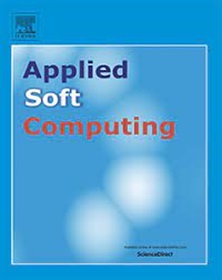WamGLM: A multimodal large-scale language model for wafer map defect information in-depth query through multi-turn dialogue based on prototypical supervised contrastive learning
IF 6.6
1区 计算机科学
Q1 COMPUTER SCIENCE, ARTIFICIAL INTELLIGENCE
引用次数: 0
Abstract
To ensure production efficiency and process stability in semiconductor manufacturing, it is of critical importance to detect wafer map defects and perform information query for tracing and solving problems during the manufacturing process. Numerous vision models based on deep learning have been successfully applied to wafer map defect recognition (WMDR), yielding remarkable results. However, the dynamic and in-depth querying of wafer map defect information remains relatively underexplored. Leveraging the rapid advancements in multimodal large language models (MLLMs), this paper proposes a novel approach for wafer map defect information query (WMDIQ). First, following the paradigm of employing cross-modal alignment model to bridge vision and language models, an end-to-end response MLLM: general language model for wafer map (WamGLM), is constructed for WMDIQ. Concurrently, by designing an interactive dialogue framework between large language models (LLMs), the first large-scale multi-turn dialogue dataset: visual multi-turn question answering dataset for wafer map defects (WaferMapVMQA Dataset), is constructed for wafer map defect analysis. Subsequently, WamGLM is trained using a two-stage fine-tuning strategy. In the first stage, a visual fine-tuning method based on prototypical supervised contrastive learning (PSCL) is introduced to enhance the intra-class compactness and inter-class separability of defect features. In the second stage, language fine-tuning is conducted using the WaferMapVMQA Dataset to infuse specialized knowledge into WamGLM. To validate the effectiveness and superiority of the proposed method, experiments are conducted on a real wafer map dataset. The results demonstrate that the proposed method significantly outperforms other methods in both defect recognition performance and information query response performance. Our code is available at: https://github.com/ZihaoLei/WamGLM.
WamGLM:基于原型监督对比学习的多回合对话深度查询晶圆图缺陷信息的多模态大规模语言模型
在半导体制造中,为了保证生产效率和工艺稳定性,晶圆图缺陷检测和信息查询对于跟踪和解决制造过程中出现的问题至关重要。许多基于深度学习的视觉模型已经成功地应用于晶圆图缺陷识别(WMDR)中,并取得了显著的效果。然而,晶圆图缺陷信息的动态和深度查询还相对缺乏研究。利用多模态大语言模型(mllm)的快速发展,提出了一种晶圆图缺陷信息查询(WMDIQ)的新方法。首先,采用跨模态对齐模型架起视觉模型和语言模型的桥梁,构建了面向WMDIQ的端到端响应MLLM:晶圆图通用语言模型(WamGLM)。同时,通过设计大型语言模型(llm)之间的交互对话框架,构建了用于晶圆图缺陷分析的第一个大规模多回合对话数据集:晶圆图缺陷视觉多回合问答数据集(WaferMapVMQA dataset)。随后,WamGLM使用两阶段微调策略进行训练。第一阶段,引入基于原型监督对比学习(PSCL)的视觉微调方法,增强缺陷特征的类内紧密性和类间可分性;在第二阶段,使用WaferMapVMQA数据集进行语言微调,将专业知识注入WamGLM。为了验证该方法的有效性和优越性,在真实的晶圆图数据集上进行了实验。结果表明,该方法在缺陷识别性能和信息查询响应性能上都明显优于其他方法。我们的代码可在:https://github.com/ZihaoLei/WamGLM。
本文章由计算机程序翻译,如有差异,请以英文原文为准。
求助全文
约1分钟内获得全文
求助全文
来源期刊

Applied Soft Computing
工程技术-计算机:跨学科应用
CiteScore
15.80
自引率
6.90%
发文量
874
审稿时长
10.9 months
期刊介绍:
Applied Soft Computing is an international journal promoting an integrated view of soft computing to solve real life problems.The focus is to publish the highest quality research in application and convergence of the areas of Fuzzy Logic, Neural Networks, Evolutionary Computing, Rough Sets and other similar techniques to address real world complexities.
Applied Soft Computing is a rolling publication: articles are published as soon as the editor-in-chief has accepted them. Therefore, the web site will continuously be updated with new articles and the publication time will be short.
 求助内容:
求助内容: 应助结果提醒方式:
应助结果提醒方式:


